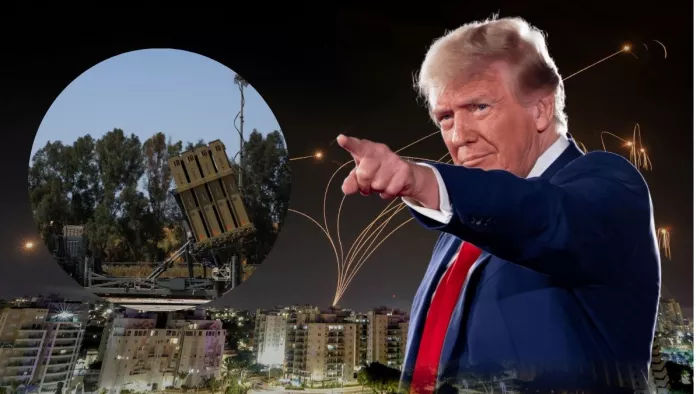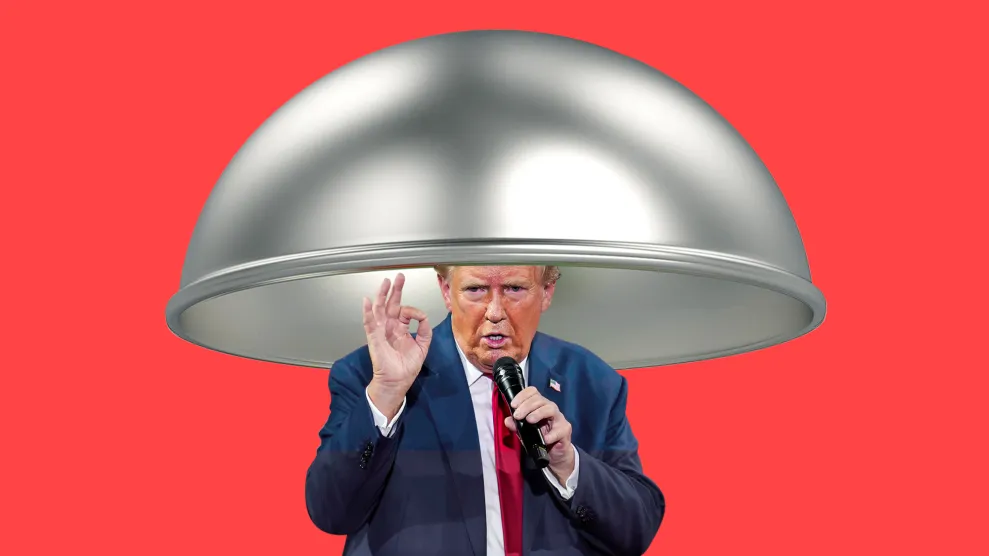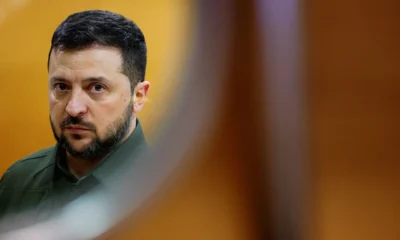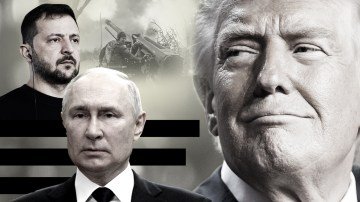President Donald Trump is back in the headlines with a bold and ambitious plan to fortify America’s defense capabilities. In a recent address at a Republican lawmakers’ retreat at his golf resort in Miami, Trump announced that he would sign an executive order to kickstart the construction of a US version of Israel’s famous “Iron Dome” missile defense system.
Alongside this announcement, he revealed three other executive orders aimed at reshaping military policy and addressing controversial social initiatives.
Building an ‘Iron Dome’
The “Iron Dome” is a name that resonates globally as a symbol of technological innovation and security. Developed and deployed in Israel with significant US funding, this air defense system is designed to intercept and neutralize incoming rockets and mortars. Trump’s plan to replicate this system for the United States stems from a campaign promise to provide Americans with unparalleled protection from external threats.
During his speech, Trump stated the need for having a very strong defense and also noted that he would be signing four new executive orders. The first of these orders focuses on creating a state-of-the-art missile defense shield, which he claims will protect Americans from potential threats.
While the idea sounds promising on paper, it’s worth noting that military experts have expressed skepticism about the feasibility of such a project. The Iron Dome works effectively in Israel, a country roughly the size of New Jersey, against relatively low-power rockets. However, scaling this system to cover the vast expanse of the United States is an entirely different challenge. The cost alone could be astronomical, and its effectiveness against advanced weaponry from nations like Russia or China remains questionable.
Additionally, the US already boasts robust missile defense systems, including the Ground-Based Midcourse Defense (GMD) and the Terminal High Altitude Area Defense (THAAD). Critics argue that investing in a new Iron Dome project might be redundant, especially when existing systems are designed to counter sophisticated threats.

A Campaign Promise To Be Fulfilled?
Trump’s push for an American Iron Dome has been a recurring theme in his political rhetoric. During his 2024 re-election campaign, he often spoke of outdoing Israel’s system, even declaring on Elon Musk’s social media platform X that he would build “the best Iron Dome in the world.” He further solidified this vision by adding the proposal to the Republican Party’s official platform in July.
Despite his enthusiasm, the project’s future is far from guaranteed. Implementing such a massive initiative would require Congressional funding, a hurdle that may prove difficult given the divided political climate.
In Trumps words,
“You know, we protect other countries, but we don’t protect ourselves. Now we have phenomenal technology. You see that with Israel where, out of 319 rockets, they knock down just about every one of them. So I think the United States is entitled to that.”
Sweeping Changes for the Military
The Iron Dome announcement was just one part of Trump’s broader agenda to reshape the US military. He unveiled three additional executive orders aimed at what he described as ensuring America has “the most lethal fighting force in the world.”
Removing DEI Initiatives: Trump pledged to eliminate diversity, equity, and inclusion (DEI) programs from the military, framing them as unnecessary distractions that hamper operational effectiveness.
Banning Transgender Ideology: Another executive order would aim to purge what he called “transgender ideology” from the armed forces. This move is likely to spark heated debates, as it revisits the controversial policies from his previous administration.
Reinstating Service Members: The fourth order would reinstate approximately 8,000 service members who were discharged for refusing COVID-19 vaccine mandates between August 2021 and January 2023. Trump framed this action as a matter of justice and restoring trust in the military.
A Flood of Executive Orders
Monday’s announcement added to a growing wave of executive actions that Trump has unleashed since his return to the White House on January 20.
Officials reported that Trump set a record on his first day back in office, signing 42 executive orders, memorandums, and proclamations—a number unprecedented in US history.
Monday’s batch of orders, however, focused specifically on reshaping the US military and redefining its strategic priorities.
For example, these directives echoed Trump’s 2017 attempt to institute a “transgender military ban” during his first term in office. That policy was later reversed by President Joe Biden in 2021. Today, an estimated 8,000 service members openly identify as transgender, though many more may choose not to disclose their identities publicly.
The latest executive orders also coincided with Defense Secretary Pete Hegseth’s first day at the Pentagon. Hegseth, a veteran and former Fox News host, has been an outspoken critic of what he calls a “woke” ideology infiltrating the armed forces. He has also questioned the role of women in combat positions.
As the new head of the Pentagon, Hegseth has pledged to lead a sweeping overhaul of military leadership and restore what he describes as a “warrior culture” within the armed forces.
However, Hegseth’s confirmation was not without controversy. Despite allegations of sexual misconduct and struggles with alcoholism, he secured the position with the support of 50 Republican senators on Friday. Three Republican senators, including former Senate Majority Leader Mitch McConnell, opposed his nomination.

US President Donald Trump Hints at Removing Income Tax and Replacing It with Tariffs
Trump has once again proposed eliminating income tax for Americans, advocating a return to a tariff-based system that he claims made the country richer and more powerful suggesting US should enrich itself by tariffing and taxing foreign nationals instead of its citizens.
Speaking at the 2025 Republican Issues Conference at the Trump National Doral Miami on January 27, 2025, Trump detailed his vision. The three-day planning session, according to AFP, aimed to outline Trump’s ambitious legislative agenda.
What Did Donald Trump Say About Income Tax?
“America’s gonna be very rich again, and it’s gonna happen very quickly. It’s time for the United States to return to the system that made us richer and more powerful than ever before,” Trump declared.
He emphasized that the US operated without an income tax prior to 1913, relying on tariffs to generate revenue. Trump argued that this system enriched the nation and allowed previous presidents to undertake significant projects.
“You know, from 1870 to 1913, it was all tariffs. That was the richest period in the history of the US—relatively speaking. They even set up a blue-ribbon committee, the great tariff commission of 1887, to figure out what to do with all the money we were bringing in,” Trump said.
Trump has long championed this idea, even during his campaign for re-election. Tariffs, typically charged as a percentage of the price a buyer pays to a foreign seller, are collected by Customs and Border Protection agents at ports of entry across the country.
However, mainstream economists have expressed scepticism about the proposal, often considering tariffs an inefficient method for governments to generate revenue or promote economic prosperity. Despite this, Trump remains steadfast in his belief that tariffs could pave the way for a richer, more self-reliant United States.
The Last Bit
Trump’s announcements signal a return to his signature style of policymaking – bold, controversial, and polarizing. While his Iron Dome proposal aims to strengthen national security, it raises critical questions about feasibility, funding, and necessity. At the same time, his efforts to reshape military culture and policies reflect his ongoing push to align the armed forces with his broader ideological vision.
Whether these sweeping changes will gain traction or remain ambitious promises is yet to be seen. For now, Trump’s vision of a secure America, shielded by its own Iron Dome, has set the stage for what promises to be another chapter of intense political debate.













